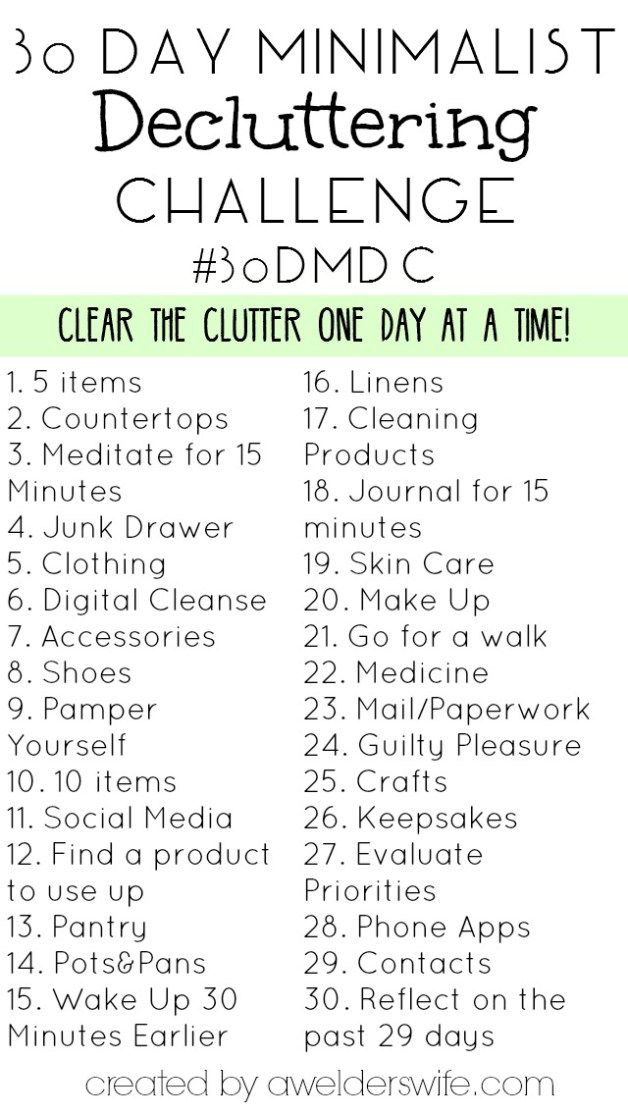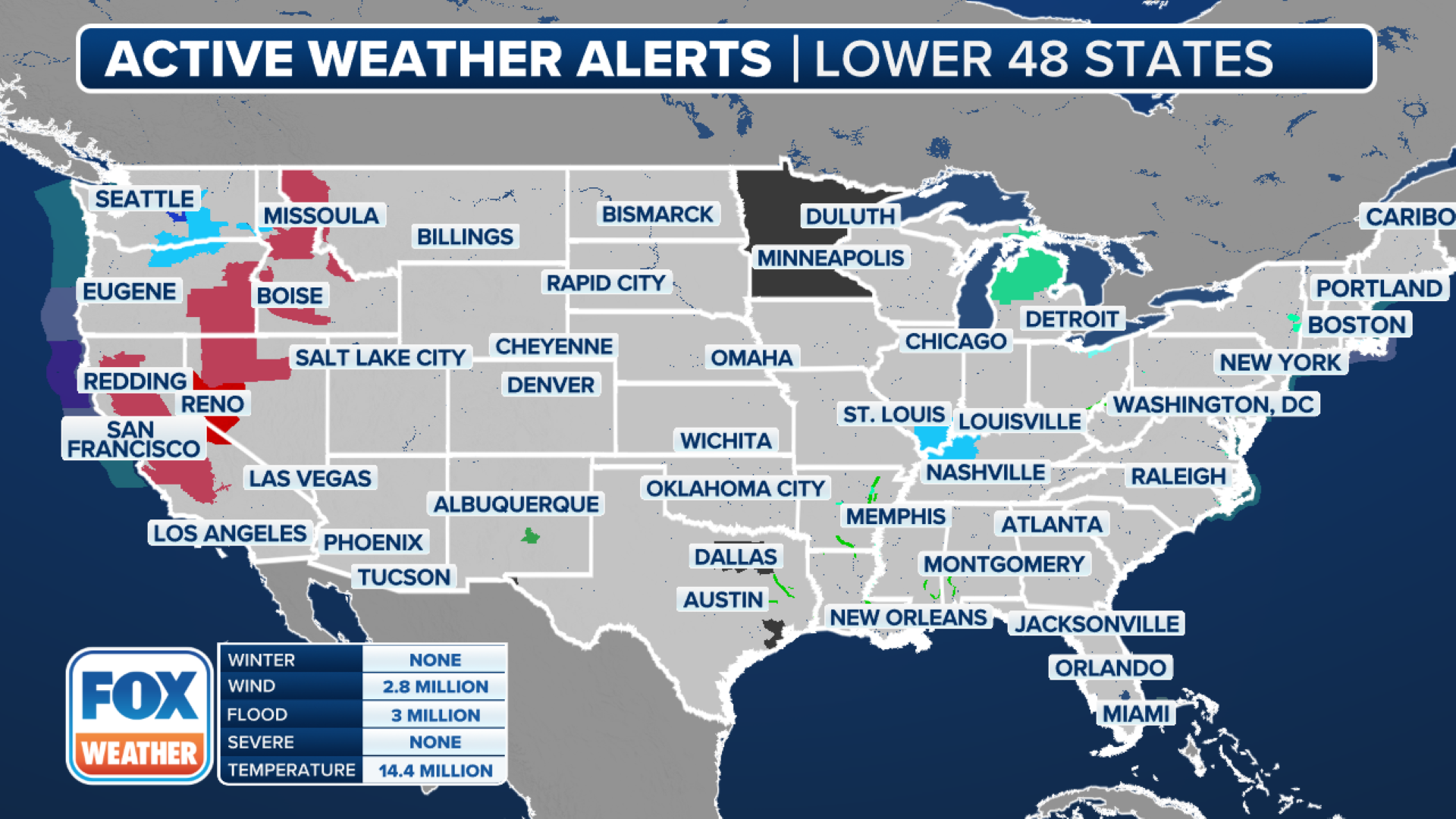30 Days To Minimalism: A Practical Guide To Decluttering

Table of Contents
Minimalism isn't about deprivation; it's about intentionality. It's about surrounding yourself with only what adds value to your life, freeing you from the burden of excess. The benefits are numerous: reduced stress, increased focus, more time for the things you love, and a greater sense of calm and control. This 30 Days to Minimalism program will guide you through the process, making decluttering manageable and rewarding. This journey to simple living will transform your home and your mind.
This 30-day plan is structured to tackle your clutter systematically, covering key areas of your home and your life. We'll start with assessment and planning, then move through clothing, other areas of the home, and finally, focus on maintaining your new minimalist lifestyle long-term. By the end of these 30 days of decluttering, you'll have a cleaner, more organized space and a clearer, more focused mind.
Week 1: Assessing and Planning Your Minimalist Journey
Before diving into the decluttering process, we need a plan. This week focuses on assessing your current situation and setting achievable goals.
Identifying Your Clutter Hotspots
Clutter tends to accumulate in specific areas. Identifying these hotspots is the first crucial step in your 30 days to minimalism.
- Common Clutter Hotspots: Closets, drawers, countertops, desks, entryways, and under beds.
- Identifying Personal Clutter Triggers: What are your personal weaknesses? Do you struggle with keeping papers organized? Do you hold on to sentimental items too long? Recognizing these triggers will help you tackle them effectively.
Setting Realistic Goals
Don't try to do too much too soon! Setting small, achievable goals is key to avoiding overwhelm and staying motivated throughout your 30 days to minimalism.
- Realistic Goals: Aim to declutter one small area each day, or one larger area per week.
- Starting Small: Begin with a drawer or a small shelf. Success breeds motivation!
- Avoiding Overwhelm: Break down large tasks into smaller, more manageable steps.
Creating a Decluttering Plan
Once you've identified your clutter hotspots and set realistic goals, it's time to create a simple decluttering plan.
- Sample Decluttering Schedule: Day 1: One drawer; Day 2: Bookshelf; Day 3: Countertop, etc.
- Prioritizing Areas: Tackle the areas that bother you most first for a quick win.
- Using a Checklist: Create a checklist to track your progress and stay organized.
Week 2: Tackling Clothing and Accessories
Clothing often constitutes a significant portion of household clutter. This week we focus on efficiently decluttering your wardrobe.
The KonMari Method and Clothing
The KonMari Method, developed by Marie Kondo, is a popular and effective approach to decluttering clothes.
- Key Principles of the KonMari Method: Hold each item and ask yourself, "Does this spark joy?" If not, thank it for its service and let it go.
- Efficient Clothing Sorting: Sort by category (tops, bottoms, dresses, etc.), not by location.
- Dealing with Sentimental Items: Take photos of sentimental items before letting them go if needed.
Decluttering Shoes and Accessories
Don't forget those shoes and accessories! They can accumulate quickly.
- Tips for Organizing Shoes: Use shoe racks, boxes, or over-the-door organizers.
- Creative Storage Solutions for Accessories: Utilize jewelry organizers, small boxes, or drawer dividers.
- Identifying and Letting Go of Unused Items: Be honest with yourself – if you haven't worn or used something in a year, it's likely time to let it go.
Week 3: Decluttering Your Home (Beyond Clothing)
This week expands the decluttering to other areas of your home. Remember to apply the principles of minimalism and simple living throughout this process.
Kitchen and Pantry Organization
The kitchen and pantry are often clutter magnets.
- Tips for Efficient Pantry Organization: Use clear containers, label everything, and organize by food type.
- Methods for Storing Food: Utilize vertical space with stacking shelves or drawer organizers.
- Identifying Expired Items: Check expiration dates and discard anything past its prime.
Bathroom and Bedroom Decluttering
Bedrooms and bathrooms can also quickly become cluttered.
- Strategies for Dealing with Toiletries: Use up old products before buying new ones; consolidate duplicate items.
- Tips for Organizing Makeup: Discard expired makeup and organize the remaining items in a drawer organizer or makeup bag.
- Simple Bedroom Organization Tips: Make the bed daily, declutter surfaces, and store items in designated places.
Living Room and Other Areas
The final areas to tackle are the living room and any other spaces in your home.
- Dealing with Books and Magazines: Donate or recycle books and magazines you no longer need or read.
- Organizing Electronics: Consolidate chargers and cords, and get rid of outdated electronics.
- Minimizing Decorative Items: Keep only items you truly love and that bring you joy.
Week 4: Maintaining Your Minimalist Lifestyle and Moving Forward
The final week focuses on establishing new habits to maintain your minimalist lifestyle long-term.
Developing New Habits
Preventing future clutter is crucial.
- Tips for Mindful Shopping: Ask yourself if you really need something before buying it.
- Strategies for Donating or Selling Unwanted Items: Donate items to charity or sell them online.
- Creating a Donation Box: Keep a designated box for items you want to donate.
The Benefits of Minimalism
Remember why you started this journey!
- Reduced Stress and Anxiety: A clutter-free environment leads to a clearer mind.
- Increased Focus and Productivity: A tidy space promotes concentration and efficiency.
- More Time and Freedom: Less clutter means less time spent cleaning and organizing.
Maintaining a Minimalist Home
Staying organized takes consistent effort.
- Regular Decluttering Sessions: Schedule short decluttering sessions regularly to stay on top of things.
- Strategic Storage Solutions: Invest in storage solutions that maximize space and keep items organized.
- Mindful Consumption Habits: Practice mindful shopping and avoid impulse purchases.
Conclusion: Embrace the Joy of Minimalism
This 30-day plan provides a structured approach to decluttering and embracing a minimalist lifestyle. By following these steps, you'll not only create a more organized home but also cultivate a calmer, more focused mind. Remember the importance of each stage: assessment, planning, action, and maintenance. Embrace the joy of simple living and experience the transformative power of decluttering.
Start your 30 days to minimalism journey today! Download our free checklist (link to checklist here) and begin decluttering your life for a more peaceful and organized future. Embrace simple living and discover the transformative power of decluttering!

Featured Posts
-
 Chase Lees Successful Mlb Comeback Shutout Inning On May 12 2025
May 31, 2025
Chase Lees Successful Mlb Comeback Shutout Inning On May 12 2025
May 31, 2025 -
 Today In History March 26th Princes Fatal Fentanyl Levels Revealed
May 31, 2025
Today In History March 26th Princes Fatal Fentanyl Levels Revealed
May 31, 2025 -
 Saint Jean De Luz Amenagement Du Littoral Face Au Recul Du Trait De Cote
May 31, 2025
Saint Jean De Luz Amenagement Du Littoral Face Au Recul Du Trait De Cote
May 31, 2025 -
 Active Vs Expired Weather Alerts Your Guide To Severe Storms In The Carolinas
May 31, 2025
Active Vs Expired Weather Alerts Your Guide To Severe Storms In The Carolinas
May 31, 2025 -
 Are Tech Companies Responsible When Algorithms Radicalize Mass Shooters
May 31, 2025
Are Tech Companies Responsible When Algorithms Radicalize Mass Shooters
May 31, 2025
